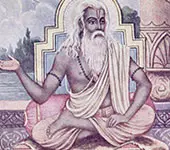Why Effort Matters More than Destiny

What is the role of action and effort in achieving success?
According to Yoga Vasishta, action and effort are crucial for achieving anything. Action includes physical, verbal, and mental activities, all of which are essential to reach any goal. Desire alone, without putting in the necessary effort, is foolish—it won't take you anywhere. Success requires not just working hard, but working in the right way. Especially in spiritual matters, the effort must follow the advice of the Shastras. Without this guidance, even hard work will not yield results. The teachings emphasize that only by following the Shastras can one achieve the results they promise.
Is destiny more important than present effort?
No, Yoga Vasishta teaches that destiny is simply the consequence of one's own actions from past births. Destiny is not arbitrary. Your present effort can overcome the influence of your past actions. The clash between past influences and present intentions is like two bulls fighting—the stronger one wins. If your present effort is stronger, it will determine the outcome. Even obstacles like diseases come from past actions, but they can be overcome with effort. The Puranas mention that even Vishnu fought demons for thousands of years before succeeding. This example teaches that effort must be continuous and determined. Blaming destiny gets you nowhere; effort is the way forward.
Why do some people fail despite following the Shastras and making an effort?
Sometimes, even those who follow the Shastras face challenges, such as diseases or obstacles. According to Yoga Vasishta, these challenges come from past actions and can clash with one's present intentions. Obstacles are not roadblocks but rather tests of your determination. With sufficient effort, any challenge can be overcome. Yoga Vasishta teaches that the power of present effort is greater than past influences if you have the determination and strength to push forward.
What are the types of effort?
Yoga Vasishta speaks of two types of effort: one that follows the Shastras and one that does not. Effort that aligns with the Shastras leads to the ultimate spiritual goal, while effort that ignores their wisdom leads to negative consequences. Following the Shastras gives one the right guidance to attain liberation and success, while ignoring this wisdom results in misguidance and failure.
What are the three debts humans are born with?
According to Yoga Vasishta, humans are born with three types of debts: to the Devas (gods), to the Rishis (sages), and to their ancestors. These debts are what keep the cycle of rebirth going. The Devas themselves do not want humans to be easily free of these debts, which is why they sometimes create obstacles when someone tries to break free. However, if a person makes strong and correct efforts, they can overcome these obstacles. Obstacles are not the endpoints—they are tests that can be overcome with persistent and focused effort.
Why do some people believe that destiny controls their life?
According to Yoga Vasishta, only fools believe that their lives are controlled by destiny or something beyond their own effort. This belief comes from either not having read the true Shastras or misunderstanding them. The reality is that life is shaped by one's actions, and the power of present effort is greater than the influence of past actions. The message of the true Shastras is that effort is the key to success, and blaming destiny is simply an excuse for inaction.
Lessons
- Action and Effort: Success needs physical, verbal, and mental effort. Desire without effort leads nowhere.
- Guided Effort: Follow the Shastras for true success; random efforts won’t work.
- Effort vs. Destiny: Destiny comes from past actions. Present effort can overcome past influences.
- Types of Effort: Shastra-guided efforts lead to spiritual success. Unguided efforts lead to failure.
- Destiny Misunderstood: Fools blame destiny. True wisdom teaches that effort shapes success.
